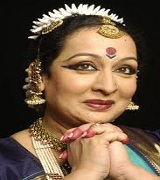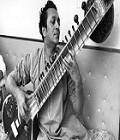Main Feature

Tyagaraja Aradhana
Tyagaraja was a musical genius. This is how we should recognise him— and revere him— most of all. If it were not for his compositions, I doubt that he would even be remembered today. If he is in the limelight today as a bhakta and a philosopher, an interpreter of and a commentator on the human condition, it is because he has won our admiration and affection with the treasure-trove of compositions he has bequeathed to us. It is his music that binds the average denizen of Carnatica to him. India has been a land of saints and philosophers, but I doubt that
this son of Ramabrahmam should be reckoned as unique among them.
Special Feature

Dancers Speak
Over the years, I have been involved in teaching Indian dance in well-endowed private schools in New York City.
In 1993, I was in fact on the faculty of one such school, teaching as a visiting artist. But what I am writing about now is a special programme in which I have been involved along with my musician-colleagues. This is the fifth year we are participating in a series of performances aimed at taking Indian dance and music to inner city schools in all five boroughs of New York City, and reaching diverse ethnic and economic groups of children. The mission, as well as the challenge, for Savitri, Murali and me has been to present classical Bharatanatyam interestingly to audiences which have a very short attention span and moreover do not identify with Indian culture. Some of the schools and teachers have been prone to view the programme as Hindu religious indoctrination.
Opinion Column

The Two-legged Stool
At least since Miya Tansen, Hindustani music has had a four-stage melodic development protocol. Tansen recommended a Pada (Sanskrit:“Padya”, or the poetic element) of four stanzas. There would be no sanctity to the number four, unless the couplets were intended also to be composed differently, with each having a well-defined musical function. Collectively, just as the poetic verses are intended as a complete expression of an emotional statement, the four parts of the melody are intended as an aesthetically satisfying exposition of the raga. In addition, Tansen also prescribed that the rasa (emotional content) of the poetry and that of the raga should be in perfect harmony.


